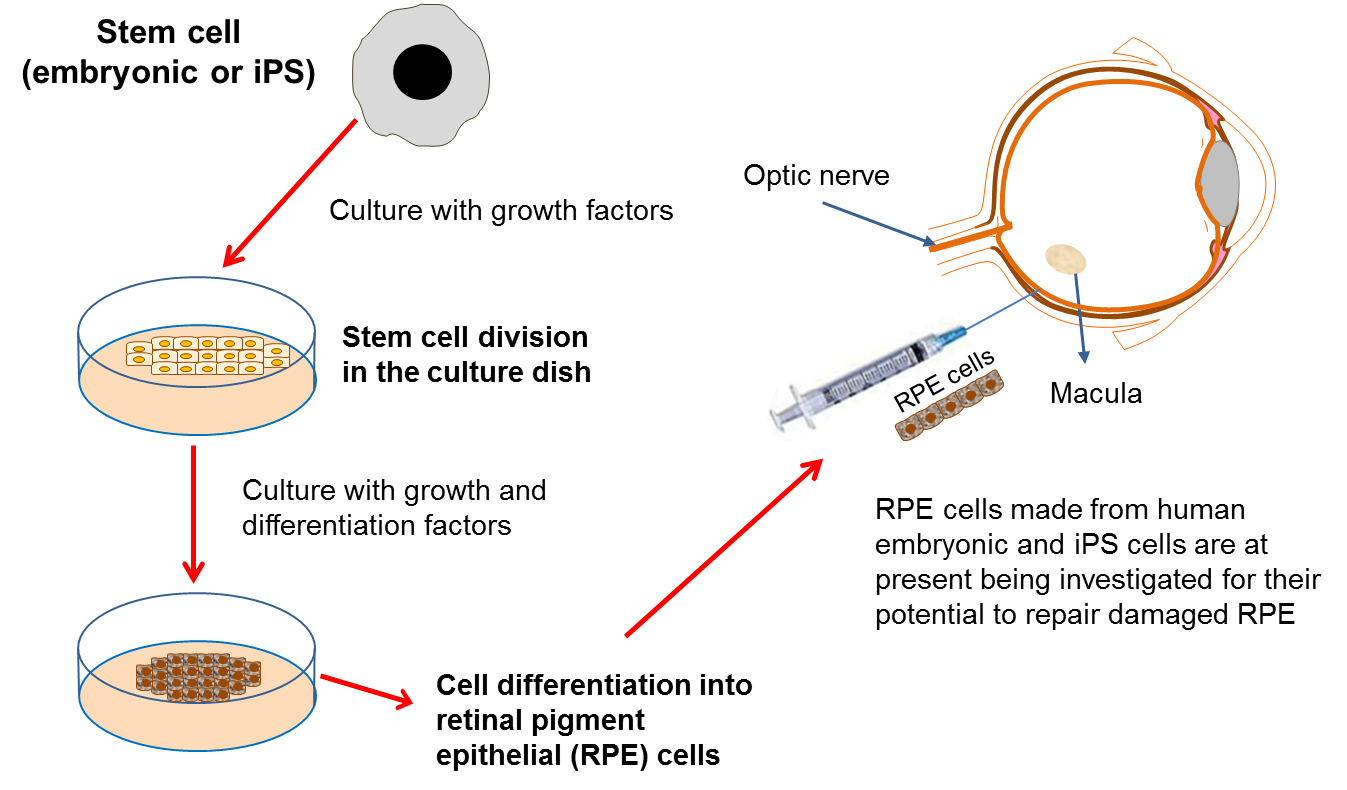Ophthalmology and Vision Care
OPEN ACCESS | Volume 5 - Issue 2 - 2025
ISSN No: 2836-2853 | Journal DOI: 10.61148/2836-2853/OVC
P D Gupta
Founder Director, Iladevi Cataract and IOL Research Centre, Ahmadabad, India.
*Corresponding Author: P D Gupta, Founder Director, Iladevi Cataract and IOL Research Centre, Ahmadabad, India.
Received Date: June 20, 2022
Accepted Date: August 04, 2022
Published Date: September 20, 2022
Citation: P D Gupta. (2022) “Stem Cell Technology for Eye Disorders”, Ophthalmology and Vision Care, 2(3); DOI: http;//doi.org/09.2022/1.10233
Copyright: © 2022 P D Gupta. This is an open access article distributed under the Creative Commons Attribution License, which permits unrestricted use, distribution, and reproduction in any medium, provided the original work is properly Cited.
Dry and wet, both AMDs have different characteristics however both other than preventative measures, cannot be treated. Recent technological advancement in Stem cell technology have shown some ray of hope in the treatment of age-related macular degeneration AMD. Mesenchymal stem cells offered several advantages for the treatment of eye diseases including an ability to differentiate into retinal cells. In the series of publications [12, 13] we have described a cheaper source of mesenchymal stem cells i.e., menstrual blood.
Introduction:
The eye is the most important sensory organ in humans. Many of the conventional treatments are ineffective for certain ocular disorders. For example, there’s no cure for the age-related macular degeneration (AMD) [1,2]. It is estimated that over 300 genes have been implicated in retinal degenerations. There is no way to regulate that many genes to correct ADM. The earlier management methods for AMD were cumbersome and not much effective; the advanced methods such as, gene therapy, artificial retina involving genetic engineering technology, using optical or laser switches to excite neurons (optogenetics) [3,4] and advanced biological techniques such as transplanting stem cells has better scope for management of macular degeneration. Stem cells can act as a source of new, healthy specialized cells and may provide a way to replace damaged cells in the eye. Therefore, researchers are now using stem cell technology to explore possible new approaches to treatments for loss of vision.
A small study, involving people with wet AMD, published by the New England Journal of Medicine, found that using a person’s own stem cells to replace damaged retinal cells, resulted in maintaining visual acuity for one year after the procedure [5]. The study authors wrote, “This seems to indicate the surgery helped to halt the progression of the disease.” Although this study does not indicate that stem cell therapy is effective for dry AMD, many scientists are confident that upcoming studies on stem cell therapy for dry AMD will be promising.
Stem cell therapy gained momentum for the past three decades in therapeutics. Stem cell therapy can restore vision and prevent continued deterioration without surgery. It is a great option for patients who want to avoid eye surgeries out of fear of the risks. Stem cells can create new retinal pigment cells to restore the vision, and prevent potential blindness. Stem Cell Technology has shown promises to slow the disease and keep a patient from having a severe loss of vision. It was only possible to use newly developed mesenchymal stem cells which offered several advantages for the treatment of eye diseases, including an ability to differentiate into retinal cells and to be grown outside the body [6-10] Recently, researchers at the Centre for Genomic Regulation (CRG) in Barcelona have developed a stem cell treatment for retinal degeneration that focuses on two chemokine receptors, Ccr5 and Cxcr6. They engineered mesenchymal stem cells from bone marrow to have an excessive amount of Ccr5 and Cxcr6 and transplanted them into models of retinal degeneration [11]. That preserved the function of degenerating retinal tissue, they reported in the journal Molecular Therapy [11].
Stem cell culturing technique:

Figure 1: Procedure for using culture and implantation of stem cells in optical disorders.
Cheaper source of Mesenchylal Stem cells:
Approximately a decade ago, discovered menstrual blood-derived stem cells (MenSCs) are boon in therapeutics and a list of diseases are treated and more are in pipeline undergoing clinical trials [12,13] With potential for multi-directional differentiation, MenSCs are able to undergo adipogenic, chondrogenic, osteogenic, myogenic and neurogenic differentiation in vitro. Compared to other sources of MSCs, MenSCs can be easily selected in a periodic manner and obtained by a non -invasive method, avoiding the ethical issues. They do not form teratomas and can be expanded by at least 20 passages without genetic abnormalities. Though nobody has used MenSCs for eye disorders but soon they would be the first choice.